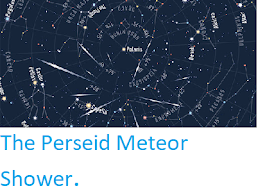The Aurigid Meteor Shower is potentially visible each year between 28 August and 5 September each year, peaking on 31 August-1 September. This meteor shower gets its name from the constellation of Auriga in the Northern Hemisphere, from which meteors appear to radiate. However the meteor shower does not appear every year, having been only sighted four times since its discovery in 1935 by astronomers Cuno Hoffmeister and Arthur Teichgraeber (in 1935, 1986, 1994, and 2007). If the meteors do make an appearance this year, then they may not be easy to spot, as the Full Moon falls on 2 September this month.
Meteor showers are thought to be largely composed of material from the tails of comets. Comets are composed largely of ice (mostly water and carbon dioxide), and when they fall into the inner Solar System the outer layers of this boil away, forming a visible tail (which always points away from the Sun, not in the direction the comet is coming from, as our Earth-bound experience would lead us to expect). Particles of rock and dust from within the comet are freed by this melting (strictly sublimation, transforming directly from a solid to a gas due to the low pressure on it's surface) of the comet into the tail and continue to orbit in the same path as the comet, falling behind over time.
The Aurigid Meteors are made by the Earth passing through the trail of Comet C/1911 N1 (Keiss), and encountering dust from the tail of this comet. The dust particles strike the atmosphere at speeds of over 200 000 km per hour, burning up in the upper atmosphere and producing a light show in the process.
How the passage of the Earth through a meteor shower creates a radiant point from which they can be observed. In The Sky.
Comet C/1911 N1 (Keiss) was discovered on 6 July 1911, by astronomet Carl Clarence Keiss, at the Lick Observatory on the summit of Mount Hamilton, in the Diablo Range just east of San Jose, California. The name C/1911 N1 (Keiss) implies it was the first (1) comet (C/) discovered in the first half of July 1911 (period 1911 N), and that is was discovered by Keiss.
The current position and orbit of C/1911 N1 (Keiss). JPL Small Body Database.









